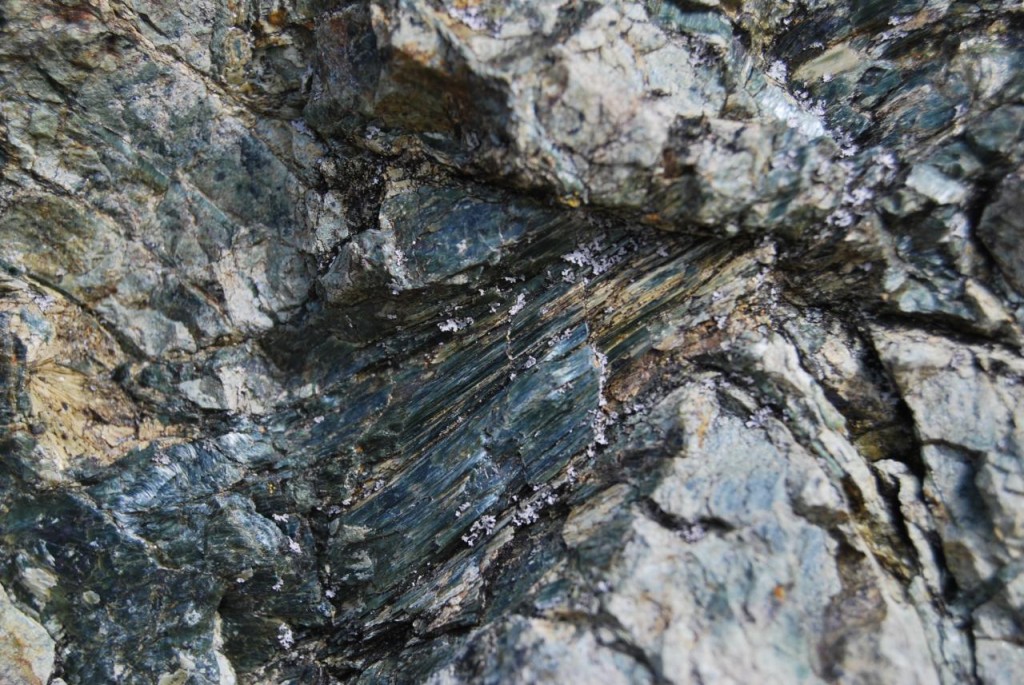The answer is yes, we actually should worry about exposure to the soil created from serpentine rock, especially airborne dust. Serpentinite is a unique and beautiful rock that’s rare in most of the world. Here in California, however, we have North America’s largest exposures and we’ve made it our official state rock. Serpentine soil habitats are often home to many native species that have adapted to some of its odd properties.
The word serpentine refers to the mottled, snakelike pattern sometimes seen on the rock. The Greek physician Dioscorides suggested ground-up serpentinite as a prevention for snakebite. Not a healthy idea, as you’ll soon learn.
The source material of serpentinite, peridotite, is a rock made of upwelled magma containing large amounts of iron. Our local serpentinite formed when there was still subduction happening here (one plate diving under another) more than 30 million years ago. As the oceanic plate dove under the continent, the peridotite was subjected to intense pressure. But because this occurred near the surface underwater, temperatures stayed low. And that’s what makes this rock special: It stayed cool under pressure. (Wish I could do that!)
Early geologists in California recognized the economic resources in serpentinite. Mercury, nickel, chromium, and magnesite were often found near its outcroppings, along with naturally occurring asbestos particles–microscopic needlelike crystals of magnesium-iron silicate. There are several forms of asbestos, but the most common type here is chrysotile. Due to its unique properties (tensile strength, flexibility, and heat and chemical resistance), asbestos has a number of valuable economic uses: acoustic tiles, fireproofing, caulking, brake pads, and filters (for removing fine particles from chemicals, wine, and other liquids).
But those slender crystals have a downside: They can become lodged in a person’s lungs or abdominal cavity and, over the course of two or three decades, lead to asbestosis or peritoneal mesothelioma (irritation of the abdomen). It’s not clear how many fibers are needed to cause lung cancer or other diseases, but any exposure involves some risk of disease. Children may be at higher risk due to their higher metabolic rate and longer time for disease to develop.
To reduce dangerous exposure to the dust, leave serpentine outcroppings undisturbed. As long as the asbestos fibers remain stabilized in the rock, they pose no hazard. All the more reason to leave them alone and just admire both the beautiful rocks and the diverse native wildflowers that thrive on the soil created by this distinctly Californian rock.
Send your questions to atn@baynature.org.





